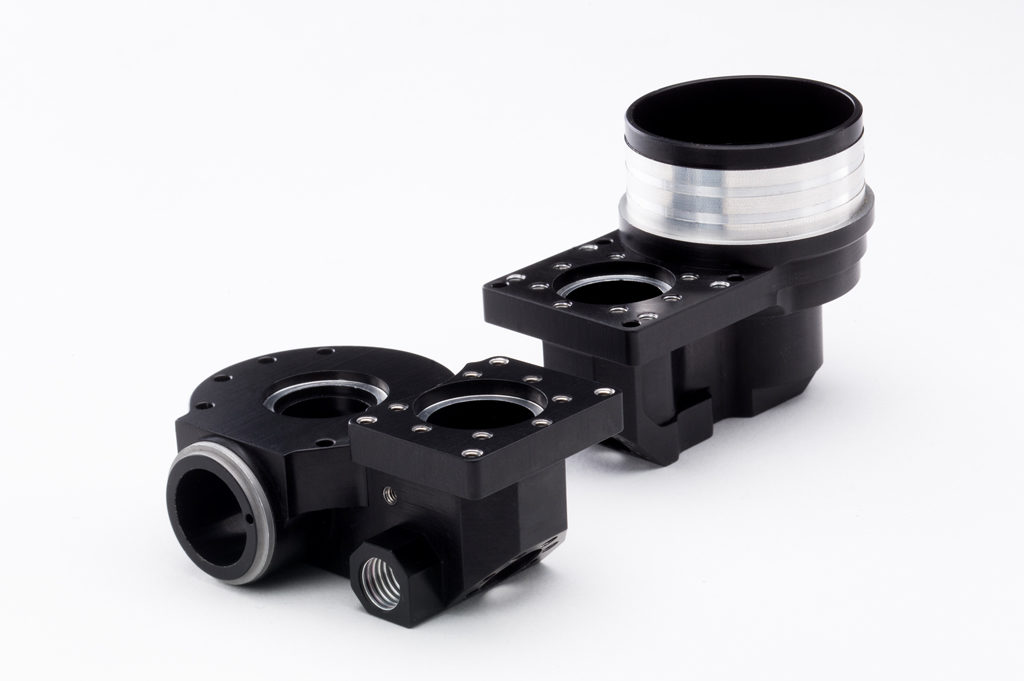Case Study: Going Above and Beyond to Master Crankcase Housings
Leave a CommentSome shops like to stick to what they already know. But where’s the fun in that? At Peerless Precision, we’re always looking for opportunities to expand our skill set and take on new challenges—especially if it’s in service of getting our customers the parts they need.
Here’s a good example of what we’re talking about…
Ten years ago, we didn’t believe we could efficiently manufacture crankcase housings. Fast forward to the present day, and crankcase housings are some of our favorite (if most challenging) parts to machine.
Sure, we faced many obstacles along the way, from figuring out how to machine blind holes to dealing with parts warped from heat treatment. However, we never gave up. We saw this challenge as an excellent opportunity for our MA machine shop to demonstrate our tenacity in the face of complex manufacturing problems.
“A lot of companies would throw in the towel after the problems we faced,” says Peerless Precision CEO Kristin Carlson. “But I’m stubborn, and I have a lot of faith in our team. I knew that once we worked out the kinks, we would move forward confidently.”
The Journey to Mastering Crankcase Housings

Crankcase housings are complex two-part assemblies that play a critical role in thermal imaging, night vision, and infrared cameras. The housings are matched with a compression piston as part of a cryogenic system.
Most crankcase housings are mission-critical and require extreme precision. However, features like complex shapes and blind holes make these assemblies extremely difficult to manufacture.
A customer request we couldn’t turn down
When a customer came to us in 2013 and asked for crankcase housings, we initially said no. Our MA machine shop hadn’t made the leap to 5-axis machining, and the complex parts seemed impossible to complete with our current equipment.
However, the customer had confidence in our team. After some back-and-forth, we resolved to manufacture the crankcase housings with the equipment we had. We quoted the customer for 10 prototypes.
Finding success with workarounds
We machined the initial prototypes out of aluminum on a 4-axis machine with a positional fifth axis. The run time was extremely long due to the part’s complexity, but because the volume of parts was so low, we could deliver them within a reasonable time frame.
Shortly after we delivered the crankcase housings to our customer, they submitted an order for 100 parts. For this higher-volume production run, the long run times would no longer do. That’s when we realized we needed to step up our game and invest in our first 5-axis machine.
Since that initial order, we’ve machined six different iterations of these crankcase housings. As our abilities evolved, so did the parts, and the crankcase housings went from basic blocks of material to highly sophisticated assemblies.
Our next precision machining challenge
Last year, our customer brought us a new challenge: machining those same crankcase housings out of tool steel. This project brought new obstacles for our team to overcome.
Because tool steel is significantly stronger than aluminum, the machining process is more intensive, and the tools wear down faster. The customer wanted the material heat treated, which added another layer of difficulty.
Though our MA machine shop was ready to take on this new challenge, we faced problems almost immediately.
We knew heat treating the parts prior to machining would harden the material even more, causing such significant tool wear that costs and lead times would skyrocket. So, we elected to heat treat the parts post-machining.
Unfortunately, when we received the first round of parts back from our heat treating vendor, the parts were completely distorted.
Collaborating to find a solution
Our foreman met with the customer’s quality team to find a solution to the distortion. We had heat treated steel before, but this was the first time we had seen such extreme distortion. Neither our team nor our customer understood what had happened.
Together, we took a different approach. We examined the distorted parts to determine which tolerances could be loosened, and our machinists adjusted the parts to minimize the effects of the distortion.
Once we knew to anticipate distortion from heat treatment, we left extra material on the crankcase housings during precision machining. When the parts returned from heat treatment, we further machined them to adhere to the parts’ tight tolerances.
Our MA Machine Shop Will Find a Way
Although we faced challenges left and right when machining these crankcase housings, we were proud to provide our customer with high-quality parts.
The takeaway here is simple: if you need a part, Peerless Precision will find a way to machine it.
“Being in the manufacturing industry is a constant learning process,” Kristin reflects. “We always work through problems together because we want to help our customers in every way we can.”
Request a quote to work with our team of problem-solvers!




